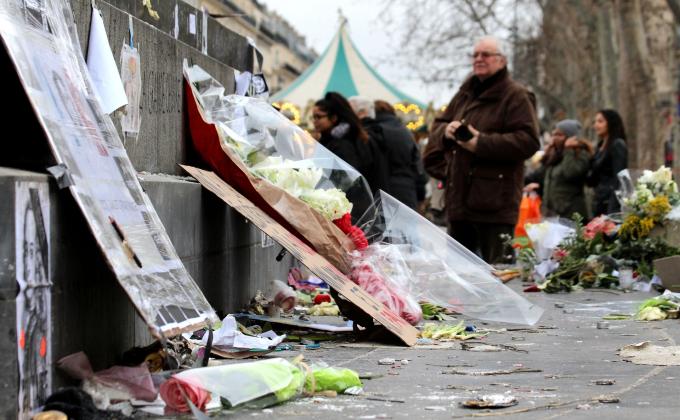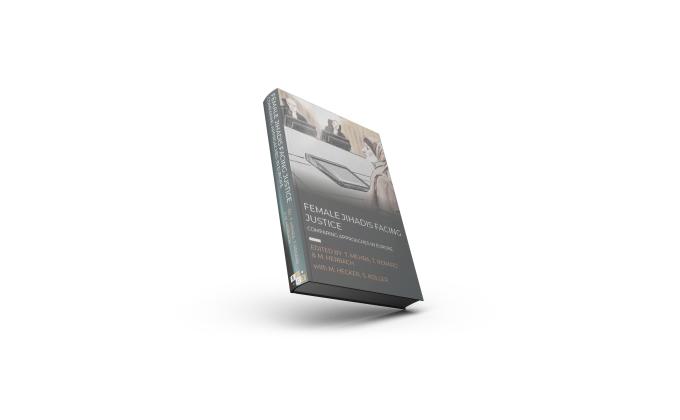December 2022 has seen the biggest raids and arrests of so-called Reichsbürger, a major anti-institutional movement in Germany so far, with ongoing investigations and more arrests in May 2023. Some were fast to call the entire Reichsbürger movement with its currently more than 23,000 affiliates a terrorist organisation, when the Federal Prosecutor General arrested only 23 Reichsbürger, based on suspicions of forming a distinct terrorist organisation. However, prosecuting Reichsbürger for terrorism charges has been the exception. Ever since the first appearance of the group in the 1980s and its increasing size in the 2010s, only one terrorism-related trial of five members of the Reichsbürger sub-group “Vereinte Patrioten” has commenced at the Higher Regional Court in Koblenz in mid-May 2023.
This Analysis seeks to assess the most-used measures of German authorities in addressing potential threats arising from the Reichsbürger movement, as well as other possible measures, such as designation as a domestic terrorist organisation. The assessment focuses on how the respect of individuals’ fundamental rights can be guaranteed when measures are applied in a context of uncertainties regarding the precise size and composition of large anti-institutional movements, such as the Reichsbürger.
Banning
One of the measures adopted to address anti-institutional groups like the Reichsbürger movement is the banning of an association. To qualify for a ban under German law (Sect. 2 (1) VereinsG), a group does not need to be formally registered as an association but simply consist of a ‘plurality of natural persons […] who gathered on a voluntary basis for a longer period of time and for a common purpose and have subjected themselves to an organised formation of will.’ A domestic group can be banned either by the Federal Ministry of Interior (BMI) when operating in more than one state, or the respective authority at state level for groups operating within the area of that state. To order a ban, the relevant authority must find that the purpose or activities of the group are violating criminal laws or going against the constitutional order, or peaceful international relations (Völkerverständigung).
An anti-institutional association can only be banned when the rejection of the constitutional order is pursued in an ‘aggressive and militant’ manner, for example, by carrying out activities immediately targeting state structures and fundamental constitutional principles with the aim of permanently undermining the constitutional order, as several administrative courts have found. These criteria are widely acknowledged, not least through long-standing jurisprudence of the European Court of Human Rights (ECtHR) that found the promotion of the use of violence and incitement to use violence against certain groups of people or democratic institutions to be sufficient criteria.
Once lawfully banned, an association is being dissolved and all assets are confiscated. Establishing a new group pursuing the same goals and activities; using an existing association as a replacement; or using insignias of a banned group is criminalised (Arts 8-13 VereinsG, Arts 84-87 StGB). Banning orders must be made available in writing to members of the group and published in the official journal.
As can be seen from intelligence statistics (Table 1), in February 2020, the BMI for the first time banned two associations – “Geeinte deutsche Völker und Stämme (GdVuSt)” and its sugroup “Osnabrücker Landmark” – which were associated with the Reichsbürger movement. Among others, members of these associations attempted to take over a town hall in Berlin and used threats and intimidation in attempt to get a convicted Holocaust denier released from prison.

Table 1: New Germany-wide banded associations incl. sub groups per affiliation per year (2011-2021) [source: BMI, 'Verfassungsschutzbericht 2021', Berlin, 7 June 2022, p. 320-327]
While neither of these two associations have challenged the banning order, other groups have done so. However, so far, all complaints filed from across the entire ideological spectrum were unsuccessful due to a legal dilemma faced by affected individuals: in order to successfully challenge a banning order, individuals must show that the ban violated their fundamental rights. Individuals then find themselves in a legal limbo: on the one hand, admitting membership in the association could lead to criminal prosecution. On the other hand, denying membership limits the chances of their complaint against a banning order to succeed. Past complaints were thus only filed by self-proclaimed former members or non-members, and based on an alleged violation of the more generic right to personal freedom. The German Federal Constitutional Court recently acknowledged individuals’ fear of criminal prosecution if admitting their support of, or membership in a banned association during an administrative proceeding, recognising that statements made in administrative proceedings cannot be directly used in criminal prosecutions. Nonetheless, this does not solve the legal limbo as the question of whether statements made in administrative proceedings are entirely inadmissible evidence in criminal proceedings, remains unanswered.
At the same time, the right to peaceful assembly and association is considered one of the pillars of democratic societies and one of the foundations of political participation. Banning an association limits this right, however, so far affected individuals could not claim an unlawful violation of their right to peaceful association, out of fear of criminal prosecution. Given the dilemma of legal remedies in challenging the ban of an association, authorities must ensure that their decisions to ban certain groups – thereby limiting the freedom to association – meet high thresholds. As the ECtHR has found, even when an association is pursuing goals that jeopardise democratic institutions, states must adhere to the principle of proportionality in applying measures to protect its institutions. Especially when used as a counter-terrorism measure, the ECtHR has repeatedly ruled that by dissolving associations due to being in opposition of the government but without calling for violence, states, such as Turkey, have violated the right to peaceful assembly and association. Similarly, Russia has been criticised for banning the human rights organisation “Memorial” in 2021 on grounds of allegedly spreading extremism and terror.
Having in mind the violent anti-institutional sentiment of the Reichsbürger and their link to conspiracy ideologies, racism and antisemitism, individual subgroups could be eligible for a ban. Although in practice, it remains questionable in how many cases this measure would be applicable. Given the diversity and size of the movement, it is unclear to what extent individual Reichsbürger gather in smaller subgroups and subject themselves to a joint decision-making process.
Banning extremist anti-institutional associations also seems to be unsuitable to cut financial flows, one of the main purposes of this measure. One of the leaders of the 2020 banned GdVuSt was able to obtain funding by selling forged job titles and offering paid seminars, spreading anti-institutional sentiments and conspiracy ideologies, until mid-2022. The UN Secretary General report on ‘Terrorist attacks on the basis of xenophobia, racism and other forms of intolerance, or in the name of religion or belief’ also points out that similar groups rely on legal sources for funding, including crowdfunding through support from sympathisers. Recent investigations into the case of five Reichsbürger conspiring to kill members of the German government and causing power cuts further indicate that subgroups rely on personal savings of individual members.
Designating
Due to the size, heterogeneity and lacking structural cooperation among the Reichsbürger as described above, the group as such cannot be qualified as a terrorist organisation, defined as a ‘structured group […], established over a period of time and acting in concert to commit terrorist acts’. A characterisation as terrorist organisation might only be applicable for smaller subgroups, given they could qualify as a ‘structured group’, provided that they exist over a certain period of time and ‘[are] not randomly formed for the imminent commission of terrorist acts.’ Indeed, individual Reichsbürger and affiliates of other large anti-institutional movements cooperate on an operational level when it comes to more concrete planning of criminal activities leading to the formation of subgroups that exist over longer periods of time. For example, American far right and anti-institutional groups planned the January 6th riot well in advance. Those arrested in Germany in December 2022 made equally precise and early plans on how to overthrow the government. Given that this operational cooperation of subgroups includes criminal activities that are likely to intimidate civil society and violently undermine existing state structures, one can argue that subgroups of domestic anti-institutional movements could be characterised as terrorist groups and designated as such by relevant domestic authorities. It could be argued that a designation as terrorist organisation would lead to more serious judicial consequences – including higher sentences – as for example, in the Netherlands and Germany, the terrorist-related elements of crime add another layer to crimes related to criminal organisations. Thus, a designation could more accurately reflect the severity of activities carried out by certain subgroups of large anti-institutional movements. A designation would also encompass additional crimes such as financing terrorism.
However, it can also be argued that a designation as a terrorist group would not necessarily come with extra investigative powers. Anti-institutional movements are targeting critical infrastructure or state representatives and given their underlying sentiment, these activities could be qualified as politically motivated crime. Therefore, investigations can already be led by specialised forces such as the German Federal Criminal Police Office (BKA). These authorities have increased access to national and international inter-agency cooperation, including exchange of intelligence through channels such as Europol.
A designation as terrorist organisation would, thus, not significantly reduce impunity for crimes committed by affiliates of anti-institutional movements. In fact, the arrests of multiple Reichsbürger in April and December 2022, as well as in May 2023 show that the BKA is able to detect and prevent potential threats posed by this group from materialising. A group of five Reichsbürger currently standing trial for terrorism charges further indicates that even without a designation as terrorist organisation, Reichsbürger can be held accountable under terrorism laws.
Disarming
German Intelligence Services are describing the Reichsbürger’ weapon affinity as one of the main threats posed by the group. The number of weapons and ammunition confiscated during the searches in December 2022 (97 firearms, 24,400 pieces of ammunition) seems to confirm this assessment. Despite having withdrawn more than 1,050 weapon licences form alleged Reichsbürger within five years, as of December 2021, intelligence services were counting more than 500 Reichsbürger who legally possess weapons.
Measures related to the withdrawal of weapon licences are based on the German Weapons Act, allowing for withdrawal in case the license holder is considered ‘unreliable’. When there is evidence that a licence holder has pursued efforts against the constitutional order within the past five years either individually, as member of an organisation, or as supporter of an organisation, s/he is considered to be ‘unreliable’. Following the 2015 terror attacks within Europe, the Council of the European Union found that existing EU legislation did not adequately address the risk of weapon misuse, and amended the Council Directive 91/477/EEC through Directive (EU) 2017/853 of 17 May 2017. Subsequently, all member states, including the United Kingdom (UK), incorporated domestic laws on assessing the reliability of weapon licence holders and applicants. Pursuant to the EU Directive, (then) member states must ensure that weapon licenses cannot be held by persons who are “likely to be a danger to themselves or others, to public order or to public safety”. This danger can be assessed based on a person’s criminal record or on ‘factual grounds’ (Tatsachen).
At a first glance, withdrawing licenses and confiscating weapons from extremists does mitigate the threat posed by a likely misuse of firearms. The measure is also proportionate since it is not infringing on any fundamental rights. Nonetheless, effective application of relevant laws requires inter-agency cooperation between administrative authorities, law enforcement, intelligence agencies, and judiciary. Inter-agency cooperation in this context was identified as one of the main priorities, not only through research on illicit firearms acquisition of terrorists in Europe, but also by the above mentioned EU Directive and its 2021 amendment [Art. 16 (2)].
Individuals affected by a licence withdrawal can challenge the order in court. In fact, the judicial review of such withdrawals has unveiled shortcomings of existing regulations in Germany. It remains unclear whether having certain ideologies or engagement in violent conduct constitutes an ‘anti-constitutional pursuits’ entailing a withdrawal. Some courts found that the mere attendance in events of right wing extremists meets this criterion, considering the concrete negative outcomes of such events. Other courts held that being considered a right wing extremist by intelligence services is insufficient reason to withdraw weapon licenses as it does not imply readiness to misuse weapons.
Considering the resistance of the Reichsbürger against authorities, not only in the context of confiscating weapon licenses and arms, there is a need to deploy specially trained law enforcement staff to enforce withdrawal and confiscation orders. Violent resistance frequently led to criminal prosecution. Nonetheless, despite the perpetrator being a Reichsbürger, criminal proceedings have so far solely dealt with resistance against law enforcement, including (attempted) murder. The underlying anti-institutional sentiment has only played a minor role. For example, in the case of a Reichsbürger who killed a police officer in 2016 when his weapon license and subsequently illegal firearms were confiscated, the court considered the perpetrator’s anti-institutional sentiment and his intention to violently defend his self-declared own state against law enforcement to constitute a base motive. This fulfilled the mental element of murder and led to a respective conviction. Imprisonment and confiscation of (fire)arms following such criminal trials provide immediate, yet temporal mitigation of threats posed by anti-institutional extremists. They only address individuals and fall short of addressing the overall ideological cooperation among Reichsbürger and structural cooperation of subgroups.
Conclusion
The case of the Reichsbürger movement is a demonstration of which judicial responses could be taken to address potential threats posed by anti-institutional movements. In this context, banning anti-institutional associations might not always lead to the intended results, such as cutting financial flows, while challenging related infringements on the right to association creates legal dilemmas for affected individuals. Although the Reichsbürger movement as such does not meet the criteria to be designated as a domestic terrorist organisation, certain subgroups might be eligible for designation. Nonetheless, prosecution authorities already appear to be well equipped to hold affiliates of the Reichsbürger responsible for terrorism-related conduct, since the political extremist nature of underlying activities already gives rise to broader investigation powers. The withdrawal of weapon licenses and subsequent confiscation of illegal arms has proven to mitigate the threat posed by potential weapon misuse through Reichsbürger. However, more research is required to ensure that judicial responses to the Reichsbürger not only mitigate imminent symptoms but follow a long-term approach. As we witness the rise of anti-institutional movements around the globe, it is important to be cognisant of the distinctions between terrorism and anti-institutional extremism and ensure that measures do not unlawfully restrict individuals’ fundamental human rights.
Photocredit: Juergen Nowak/Shutterstock








